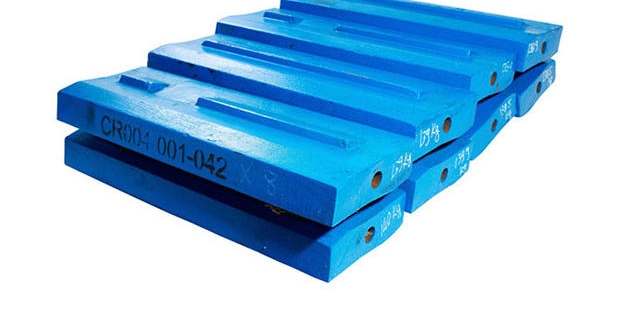Depending on your application, the material of the crusher blow bars will be affected by the type of feed materials. For concrete, aggregate, and demolition applications, the low chrome bar is most suitable. These bars can handle heavy and large feed materials but are not suited to coarse-grained or highly abrasive materials. High-chrome bars, on the other hand, can be used for a variety of applications.
Choosing the Right Material
Types of Crushing Blow Bars
For primary crushing, high-chrome blow bars are crucial. For secondary crushing, low-chrome martensitic steel is the most appropriate material. If you’re using a lower-chrome alloy, you should consider white-iron bars. These are more fragile than low-chrome martensitic-steel-steel alloys. Hence, when you need to replace a blow bar, the material should be in your preference.
There are three types of crusher blow bars. The high-chrome bars are the most effective for crushing asphalt and are the most durable. Medium-chrome ones are better for recycling, but they have limited impact on the process. The medium-chrome version is suitable for crushing larger feed sizes. If you’re using both low-chrome and high-chrome options, you can choose either. These two types are available separately, and they will all have different benefits.
The most common type of crusher blow bars is the medium-chrome one. This type has high impact resistance and is recommended for crushing concrete and light aggregates. Both types of materials can be processed by this type of bar. Some of the high-chrome bars may also be hard and abrasive. They may not be suitable for crushing reclaimed asphalt pavement, but they can be used for recycling other materials.
The wear life of crusher blow bars is dependent on the type of stone that is crushed. Hence, the material should be selected carefully. Often, the abrasive properties of the stones affect the wear life of the blow bar. It is essential to choose the right material for your crushing equipment to avoid costly repairs. If you are planning to buy a new jaw crusher, make sure to read the warranty terms.
Blow Bar Material Selection
In horizontal shaft impact crushers, blow bars are inserted into the rotor and strike the material repeatedly. The material breaks and becomes the appropriate size for the chamber. Impact crusher productivity is influenced by blow bar management. There are different metallurgies for blow bars. Each type is suited for a particular application. Read on to learn more about the options for your next crusher. A good blow bar should last for two to four times the life of a mono-alloy blow bar.
Material Quality
When considering material quality, low-chrome blow bars are the most popular choice. These are made of martensitic steel and can handle a wide range of materials. The low-chrome bar is the best choice for recycling materials. The high-chrome blow bar will likely break on metal contaminants and will result in reduced throughput. However, when choosing a material, it is important to consider the amount of impact a bar will experience.
Importance of Crusher Blow Bars
In crushing applications, blow bars play an important role. Typically manufactured into large, thick slabs of high-strength alloys or hybrid composites, they can also be referred to as hammers, impact hammers, or breakers. Depending on the end-use, crusher blow bars may be hard-faced for longer life.
Crusher blow bars are thick slabs of metal, typically some form of high-strength alloy that is attached to the leading edge of the crusher rotor. These blow bars forcefully impact the material as it enters the crusher, helping it to break against the rotor’s surface.
When choosing the best blow bars for your application it is important to consider the following factors:
– The blow bar material will be determined by the feed material’s properties and the crusher type. The use of a hybrid composite blow bar can greatly increase wear life.
– Blow bars should be designed for impact, not abrasion. You want a material that will flex, not one that will crack or break.
– The right alloy for the blow bar application depends on the material you’re crushing as well as the recyclability of the product. For example, if you’re crushing concrete with reinforcement, you want a blow bar that will fracture any piece of rebar so it doesn’t become lodged in the rotor.
– The hardness of the blow bar is also important. If the material is too hard, it will cause undue wear on the blow bars and other crusher parts.
– The right alloy for your blow bars also depends on the feed size and desired product size. For example, if you’re crushing smaller pieces, you want a blow bar with a smaller cross-section so it can shatter the material more easily.
– The design of the blow bar will also affect its performance. For example, a solid one-piece blow bar is more durable than a split blow bar.
Summary
For concrete crushing, the low chrome blow bar is the most durable and abrasive material. This type is ideal for crushing large feed sizes, but is not suited for highly abrasive materials. Its high chrome counterpart is more resistant to fatigue and has long-term wear. Low-chrome blow bars are also the best material for heavy-duty jobs, but they may require special metallurgy.



